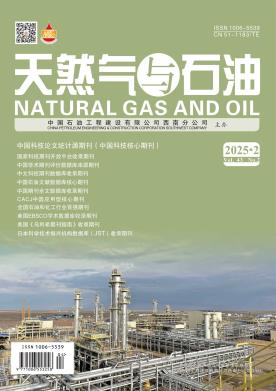新形势下中国加油站规划建设问题及发展路径分析
Analysis on challenges and development paths of gas station planning and construction in China under new circumstances
浏览(28205) 下载(191)
- 引用格式:
-
肖崇紫,张晓明,孙泽彬.新形势下中国加油站规划建设问题及发展路径分析[J].天然气与石油,2023,41(5):22-27.doi:10.3969/j.issn.1006-5539.2023.05.004
XIAO Chongzi, ZHANG Xiaoming, SUN Zebin.Analysis on challenges and development paths of gas station planning and construction in China under new circumstances[J].Natural Gas and Oil,2023,41(5):22-27.doi:10.3969/j.issn.1006-5539.2023.05.004
- DOI:
- 10.3969/j.issn.1006-5539.2023.05.004
- 作者:
- 肖崇紫1,2 张晓明1 孙泽彬1
XIAO Chongzi1,2, ZHANG Xiaoming1, SUN Zebin1
- 作者单位:
- 1. 广州市城市规划勘测设计研究院, 广东 广州 510060; 2. 广东省城市感知与监测预警企业重点实验室, 广东 广州 510060
1. Guangzhou Urban Planning & Design Survey Research Institute, Guangzhou, Guangdong, 510060, China; 2. Guangdong Enterprise Key Laboratory for Urban Sensing, Monitoring and Early Warning, Guangzhou, Guangdong, 510060, China
- 关键词:
- 加油站;双碳;充电桩;自动驾驶
Gas station; Carbon peak & carbon neutrality; Charging pile; Autonomous driving
- 摘要:
- 加油站是交通网络的重要组成部分,随着“双碳”目标的实施,加油站发展将面临重大挑战。为此系统梳理了中国加油站规划建设历程,分析研究了不同阶段的规划建设情况。研究发现,目前加油站在规划体系、布局标准、用地落实等方面仍不完善,空间分布不均衡。分析认为,虽然“双碳”目标会对加油站规划建设造成颠覆性冲击,但加油站在短期内仍具有较强的市场需求。未来,加油站规划建设应主动谋变,明晰功能定位,修正布局标准,与充电站等新能源补给站点充分衔接融合,主动融入自动驾驶环境,走向多元化发展模式。
The gas station plays a pivotal role in the transportation network. As the dual carbon strategy of “carbon peak” and “carbon neutrality” takes hold, the future of gas stations stands at a crossroad. This paper delves into the planning and construction evolution of gas stations in China, examining the planning and development at different stages. This research reveals that the current gas station planning system, layout standards, and land use have rooms for improvement. Additionally, theres a noticeable imbalance in their spatial distribution. The data suggests that while the dual carbon strategy might disrupt the traditional planning and construction of gas stations, there remains a robust market demand for them in the near term. Moving forward, gas stations must proactively adjust to these shifts in focus, redefine their functional roles, refine layout standards, and seamlessly integrate with new energy supply sources like charging stations. Embracing the autonomous driving environment, they should pivot towards a more diversified development approach.



